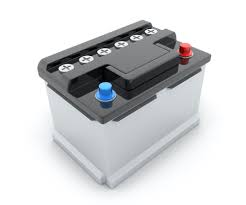Whether you’re into renewable energy systems, boating, or RVing, the choice often boils down to two types: AGM (Absorbent Glass Mat) and deep cycle batteries.
In this article, we’ll delve into the specifics of each, comparing their lifespan, maintenance requirements, cost-effectiveness, and more.
Our goal is to help you make an informed decision on which battery type is better suited for your needs.

Understanding Battery Basics
Before we dive into the comparison, let’s first understand the basics of batteries.
Batteries are devices that store energy and release it as electricity. They play a crucial role in various applications, from powering vehicles to storing renewable energy.
The two types of batteries we’re focusing on today, AGM and deep cycle batteries, are both lead-acid batteries. They differ in their construction, performance, and ideal use cases.
Let’s take a closer look at each.
What is a Deep Cycle Battery?
A deep cycle battery is designed to provide a steady amount of current over a long period.
It has thicker plates which allow it to be deeply discharged over and over again, hence the name “deep cycle”. This makes it ideal for applications that require sustained power, like solar energy systems or electric vehicles.
What is an AGM Battery?
On the other hand, an AGM (Absorbent Glass Mat) battery is a type of lead-acid battery where the electrolyte is absorbed into a mat of fine glass fibers.
This design makes AGM batteries spill-proof and allows them to deliver high currents on demand. They are commonly used in applications that require a high burst of amps, such as starting an engine.
Explore about: Can you revive a dead deep cycle battery?
AGM vs Deep Cycle Battery: The Differences
When comparing AGM batteries and deep cycle batteries, several factors come into play.
These include lifespan, durability, maintenance, cost-effectiveness, charging efficiency, and environmental impact.
Each type of battery has its strengths and weaknesses, and the best choice depends on your specific needs and circumstances.
Here’s a quick comparison:
- Lifespan and Durability: AGM batteries generally have a shorter lifespan but are more durable.
- Maintenance and Care: AGM batteries require less maintenance than deep cycle batteries.
- Cost-Effectiveness: Deep cycle batteries are usually more cost-effective in the long run.
- Charging and Efficiency: AGM batteries charge faster and are more efficient.
- Environmental Impact: Both types of batteries have environmental considerations.
Lifespan and Durability
AGM batteries are known for their durability.
They are resistant to vibration and shock, making them ideal for mobile applications. However, their lifespan is typically shorter than that of deep cycle batteries, especially when frequently discharged.
You can buy high quality deep cycle batteries online here >>
Maintenance and Care
One of the advantages of AGM batteries is their low maintenance.
Unlike deep cycle batteries, they don’t need to be topped up with water, making them a convenient choice for many users.
Cost-Effectiveness
While AGM batteries may have a higher upfront cost, deep cycle batteries often prove to be more cost-effective over time.
This is due to their longer lifespan and ability to withstand repeated deep discharges.
Charging and Efficiency
AGM batteries have a higher charge efficiency than deep cycle batteries.
This means they can be charged faster and hold their charge longer, which can be a significant advantage in certain applications.
Environmental Impact
Both AGM and deep cycle batteries have environmental impacts.
They contain lead and acid, which can be harmful if not disposed of properly. However, both types of batteries are recyclable, which can help mitigate their environmental footprint.
Choosing the Right Battery for Your Needs
Choosing between an AGM and a deep cycle battery depends on your specific needs.
Each battery type has its unique strengths that make it suitable for certain applications.
Understanding these applications can help you make an informed decision.
Renewable Energy Systems
For renewable energy systems, deep cycle batteries are often the preferred choice.
They are designed to be discharged and recharged repeatedly, making them ideal for storing solar or wind energy.
Boating and RVing
In contrast, AGM batteries are a popular choice for boating and RVing.
Their resistance to vibration and shock, coupled with their low maintenance, makes them well-suited for these mobile applications.
Automotive and Backup Power Systems
For automotive and backup power systems, both AGM and deep cycle batteries can be used.
However, AGM batteries are often favored for their faster charging and higher discharge rates.
Pros and Cons at a Glance
To further simplify the comparison, let’s look at the pros and cons of each battery type.
AGM Battery
Pros:
- Fast charging and high discharge rates
- Resistant to vibration and shock
- Low maintenance
- Spill-proof design
Cons:
- Higher initial cost
- Not as suitable for repeated deep discharging
Deep Cycle Battery
Pros:
- Ideal for repeated deep discharging
- Longer lifespan when properly maintained
- Lower initial cost
Cons:
- Requires regular maintenance
- Not as resistant to vibration and shock
Final Thoughts and Recommendations
Choosing between an AGM and a deep cycle battery ultimately depends on your specific needs. If you require a battery for applications that involve frequent and deep discharging, a deep cycle battery may be the better choice.
On the other hand, if you need a battery for high-performance applications that require fast charging and discharging, or if you prefer a maintenance-free option, an AGM battery could be the ideal solution. Always consider your specific use case and budget when making your decision.








Leave a Reply
You must be logged in to post a comment.